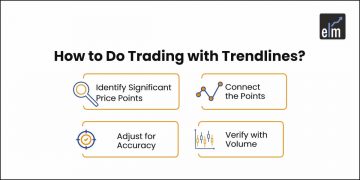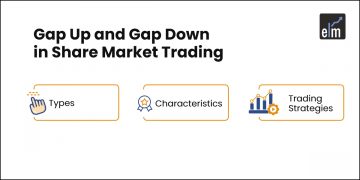In an interesting session as a part of the highly popular Face2Face series, conducted by Elearnmarkets, Mr Vivek Bajaj, Co-founder of Elearnmarkets, invited Mr JC Parets, a successful stock market investor with many years of experience, to decode how to set your career as a Technical Analyst?
JC Parets is the founder of All-Star Charts and is one of the most widely followed technical analysts globally. All-Star Charts is a research platform for professional and retail investors covering the US and International stocks, interest rates, commodities, and forex markets.
In 2008, JC earned his Chartered Market Technician designation (CMT). His work has been featured regularly on Bloomberg, CNBC, Fox Business, ABC, CNN, Wall Street Journal, and many other financial media outlets worldwide.
In this blog, our experts will be talking about how to set your career as a technical analyst in the financial sector. With the chart expert, this conversation will start with understanding charts and how the market behaviour can affect your technical analysis.
How to trade in a range-bound market?
If the market and index are in a range and the stock is in an uptrend showing relative strength, we like buying stocks that are doing well. On the other hand, if the market is in a range and stock is in a downtrend, that’s relative weakness; those are the types of stocks we want to be shorting right, so he thinks there are opportunities there.
Everybody has different time horizons, risk tolerance and overall objectives, so while he might think that it is best to be selling premium in a sideways range and collecting that income, another trader might be like, this is great, so he could buy it at the low sell at the highs or buy it at the low sell the highs.

Mr JC Parets is not good at doing that, but other traders are great. They’re not good at selling premium, so he thinks it comes down to your objectives on how you’re going to execute, so you do the technical analysis.
You identify the trends based on your time horizon and then express your thesis.
How to compare stocks in Relative Strength?
Let’s start by comparing small caps to the small-cap index. Comparing the small-cap index to the large-cap index, you know, comparing mid-cap stocks to mid-cap indexes for sure but comparing them to the larger is the wrong way to do it.
For example, in the United States, we’ll look at JPMorgan and look at it relative to the SP 500. We’ll look at JPMorgan relative to the financials index in the same way that in India you could look at bank nifty relative to Nifty 50 or Nifty 500 or to bank nifty you know right you could look at access bank relative to bank nifty access bank relative to nifty 50.
So, Mr JC Parets thinks you can do relative strength at a sector level at an index level.
You can also read our blog on A Unique Way of Using Relative Strength Index (RSI) Indicator by Mr Bharat Jhunjhunwala
What is Time-frame for the RS study and Trade Plan?
Relative Strength is the price outperformance, or underperformance result is the benchmark, so what type of time you consider can be weekly or monthly or yearly.
What is the longer-term trend of relative strength? For example, energy had been an underperformer for ten years while technology and growth was an outperformer as interest rates were falling.

Interest rates are rising, technology has been an underperformer, and energy has been an outperformer; now, you could say energy’s been outperforming.
While that is true when you zoom out, and you see the relative strength in energy, we’re in year two, and historically relative strength and energy lasts 10 years.
Relative weakness and energy also last 10 years, so if we know from experience that these relative strength trends don’t last a few weeks or a few months or even a few years, they last a decade.
Structural relative strength picture, so just like we use multiple time frames for specific stock analysis or index analysis, it’s the same thing when it comes to relative strength.
You can also watch our webinar on Trading strategy using “Relative price theory”
Co-relation between Broader market view and Stock
It’s different every time we’re talking about Bank Nifty, we’re in a range, and we’re in a range until that range breaks, so break to the upside and resume the uptrend or downside and start a new downtrend.
So, he means making a broader view of the market when doing inter-market analysis, right? So, for example, the dollar index right now is 104. It has broken important levels, so you will continue to believe that the dollar trend is an uptrend and your strategy for the stock will have that uptrend in mind, or when do you change that mindset.
You can watch the entire Face2Face video with Mr JC Parets here
Bottomline
We hope you found this blog informative and use it to its maximum potential in the practical world.
You can also check out our equity analyst course and open doors to once such lucrative career option.
Also, show some love by sharing this blog with your family and friends and helping us in our mission of spreading financial literacy.
Happy Investing!
You can also visit web.stockedge.com, a unique platform that is 100% focused on research and analytics.











